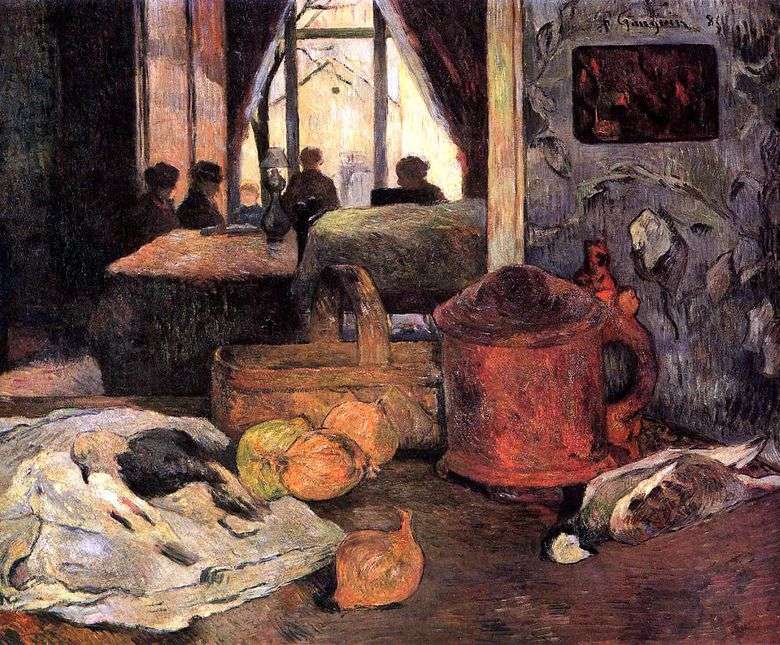
Despite the bohemian and chaotic lifestyle, addiction to alcohol and drugs, Post-Impressionist artists often turned to the image of everyday life of ordinary people. And the traditional still-life genre for classical painting under their brush ceased to be purely natural – still life could be as if inserted into the interior.
This is one of the paintings of Paul Gauguin, the scene of which is the Danish capital of Copenhagen. The German translation of the term “still life” as a dead, dead nature here partly justifies itself. Next to the large selective bulbs for the future home meal on the right and left are the dead large birds – perhaps as doves. After all, pigeon meat, and even properly cooked, is considered an exquisite delicacy.
The wicker basket and pot-bellied kettle complete the details of the still life, referring also to the interior. At a distance from us – a family of five people gathered at the table. On the table is a modest kerosene lamp. The figures gathered as if frozen in grief and silence. Two women are dressed, hats on their heads. A small child is facing us. The man, turning away, looks out the window. In a word, there is a feeling of everyday life.
 Still Life with Parrots by Paul Gauguin
Still Life with Parrots by Paul Gauguin Still Life with Fruit by Paul Gauguin
Still Life with Fruit by Paul Gauguin Still Life with Sunflowers on the Chair by Paul Gauguin
Still Life with Sunflowers on the Chair by Paul Gauguin Still Life by Paul Gauguin
Still Life by Paul Gauguin Interior of the artist’s house at the rue Karlsel by Paul Gauguin
Interior of the artist’s house at the rue Karlsel by Paul Gauguin Still Life with Charles Laval’s Profile by Paul Gauguin
Still Life with Charles Laval’s Profile by Paul Gauguin Bodegón en el interior, Copenhague – Paul Gauguin
Bodegón en el interior, Copenhague – Paul Gauguin Still Life with Three Puppies by Paul Gauguin
Still Life with Three Puppies by Paul Gauguin